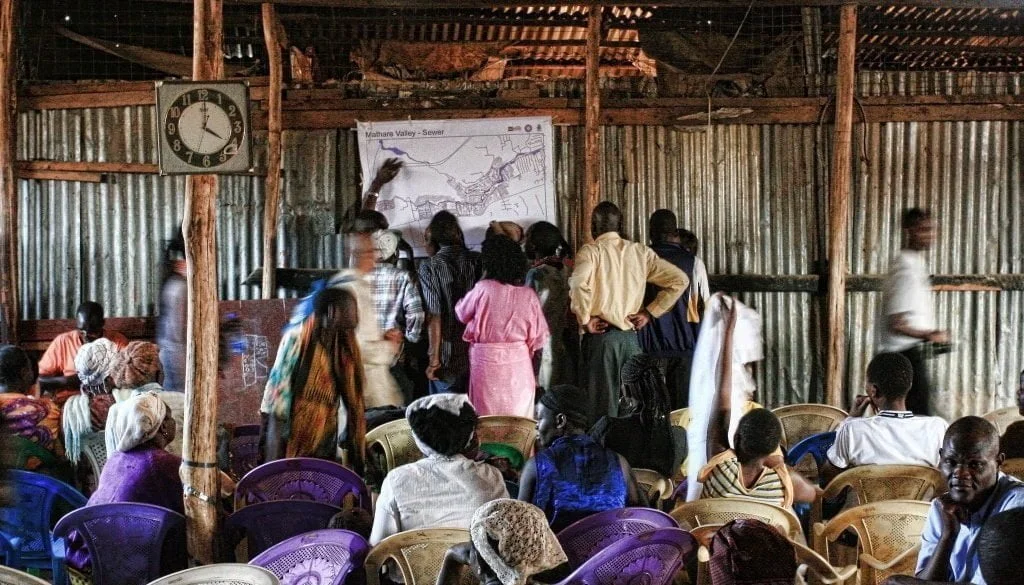Slum Upgrading and Health Equity
The document titled “Slum Upgrading and Health Equity” examines the intersection of slum upgrading initiatives and health equity, emphasizing the importance of addressing health disparities among urban poor populations living in informal settlements. The paper argues that slum upgrading is a means to improve housing and infrastructure and a vital strategy for enhancing health outcomes and promoting social equity.
Further reading:
Slum Upgrading and Health Equity – PubMed
[PDF] Slum upgrading strategies and their effects on health and socio … – 3ie 3ieimpact
Context of Slum Upgrading
As urbanization accelerates, it is projected that nearly one in seven people will live in slums by 2030. These informal settlements are characterized by inadequate housing, overcrowding, and limited access to essential services such as clean water, sanitation, and healthcare. The document highlights that slum dwellers often face significant health risks due to poor living conditions, which can lead to a range of communicable diseases and other health issues.

Health Equity and Slum Upgrading
The core argument of the document is that slum upgrading can play a crucial role in promoting health equity. By improving the physical environment—such as providing better sanitation facilities, clean water access, and adequate housing—slum upgrading initiatives can directly impact the health of residents. The paper emphasizes that health inequities are often rooted in social determinants, including economic stability, education, and access to healthcare services. Therefore, addressing these determinants through comprehensive slum upgrading can lead to improved health outcomes for marginalized populations.
Evaluating Health Benefits
Despite the potential benefits of slum upgrading for health equity, the document notes that many existing evaluations of upgrading projects fail to adequately capture their health impacts. The authors reviewed various urban programs across Asia, Africa, and Latin America and found that few assessments explicitly measured health outcomes or considered how improvements in living conditions could lead to better health. To enhance the understanding of these impacts, the document suggests implementing Health Impact Assessments (HIAs) as a standard practice in slum upgrading projects. HIAs can help identify potential health risks and benefits associated with proposed interventions, ensuring that health considerations are integrated into planning and implementation processes.
Integrated Approaches
The document advocates for an integrated approach that encompasses not only physical improvements but also social services and community engagement. This includes:
- Infrastructure Development: Upgrading basic services such as water supply, sanitation systems, drainage, and waste management.
- Health Services: Improving access to healthcare facilities and services within slum areas.
- Community Participation: Engaging residents in the planning and decision-making processes to ensure that their needs are prioritized.
By adopting an integrated approach, initiatives can address multiple dimensions of health equity simultaneously.
Policy Recommendations
To maximize the health benefits, the document outlines several policy recommendations:
- Prioritize Health in Urban Planning: Urban policies should explicitly recognize the importance of health equity.
- Utilize Health Impact Assessments: Incorporating HIAs into project planning can help identify potential health risks and benefits early on.
- Enhance Community Engagement: Involving residents in decision-making processes fosters ownership and ensures that interventions are relevant to their needs.
- Strengthen Intersectoral Collaboration: Effective collaboration between different sectors—such as health, housing, and urban planning—is essential for holistic upgrades.
- Monitor Health Outcomes: Establishing mechanisms for ongoing monitoring and evaluation of health outcomes related to slum upgrading can provide valuable insights for future projects.
Conclusion
In conclusion, “Slum Upgrading and Health Equity” underscores the critical role that effective governance plays in enhancing the lives of slum dwellers through improved health outcomes. By recognizing the interconnectedness of housing conditions, social determinants of health, and community engagement, policymakers can develop more effective strategies for addressing the needs of urban poor populations. The document calls for a paradigm shift in how slum upgrading is approached—viewing it as a key strategy not only for improving living conditions but also for promoting broader public health goals and achieving greater social equity within urban environments.
